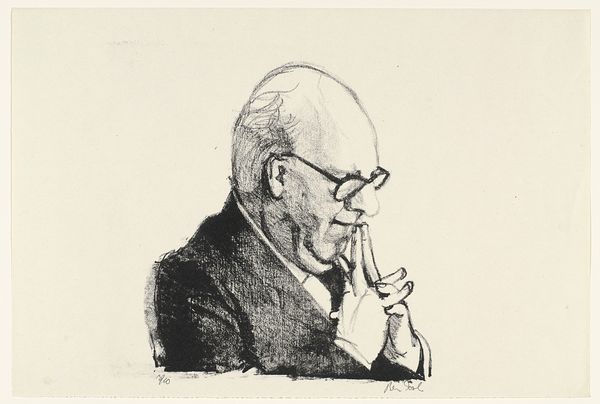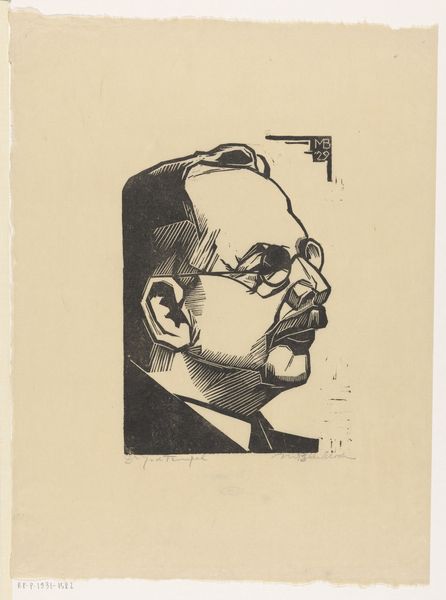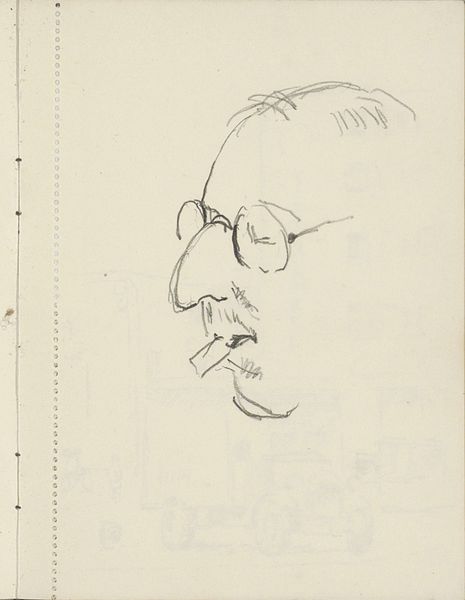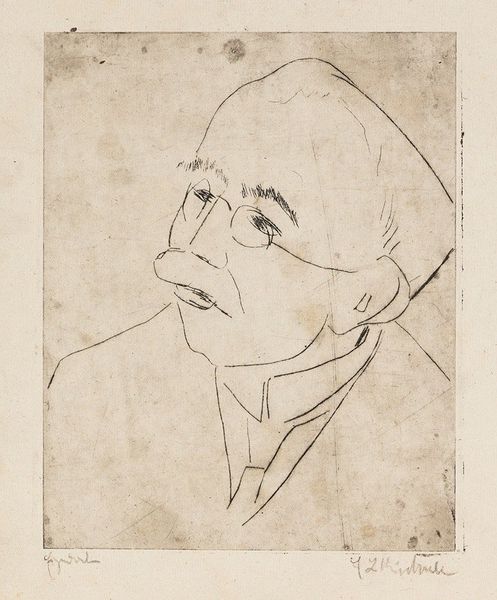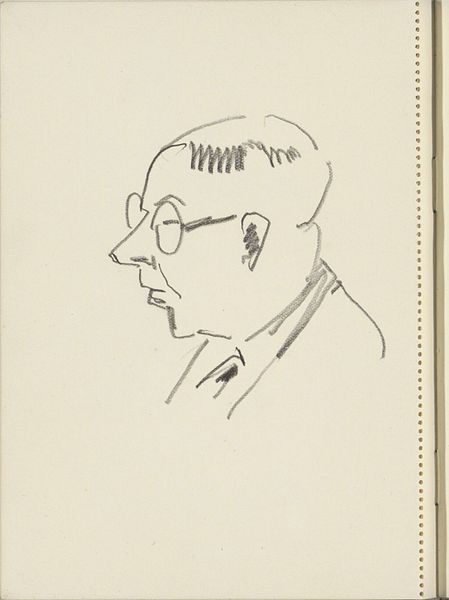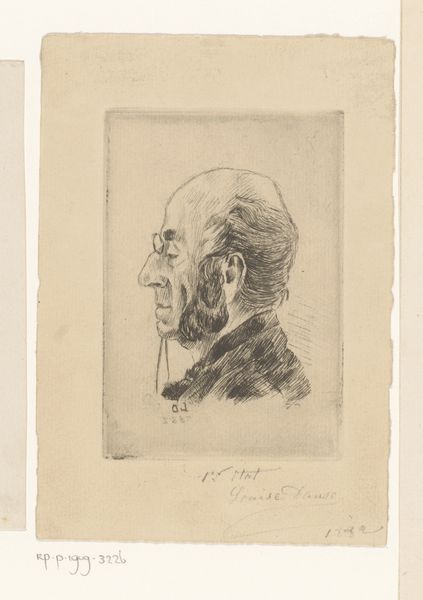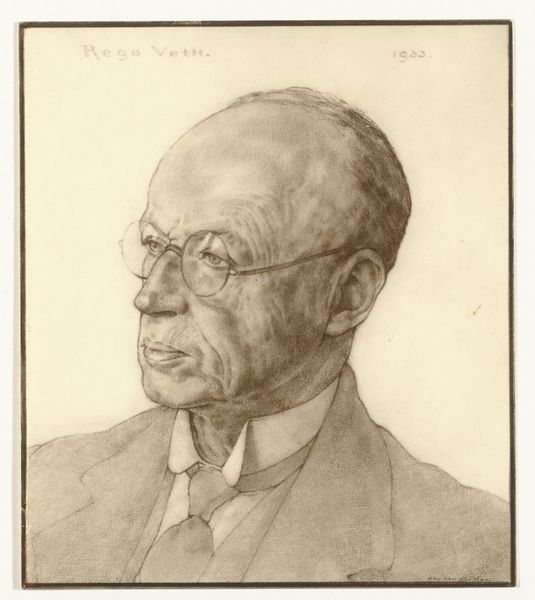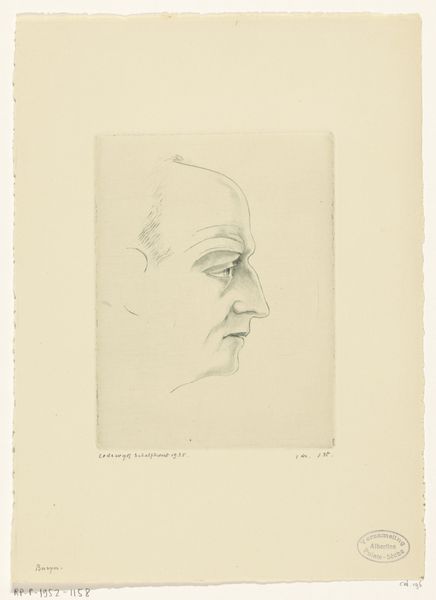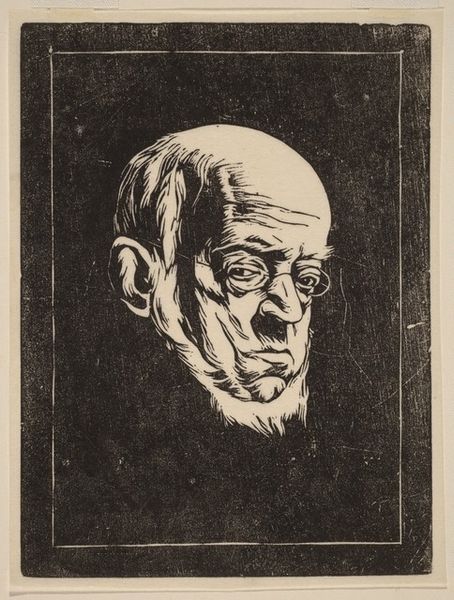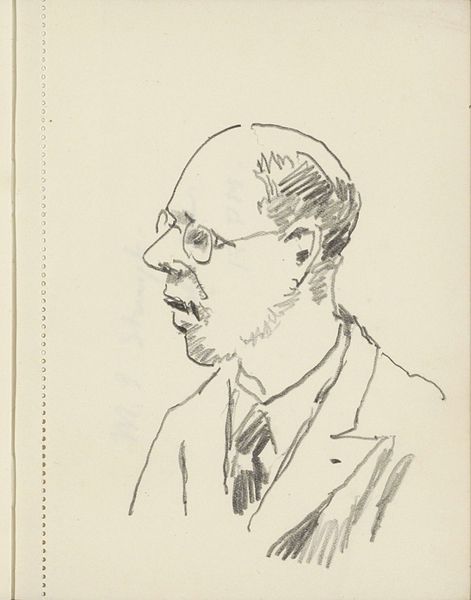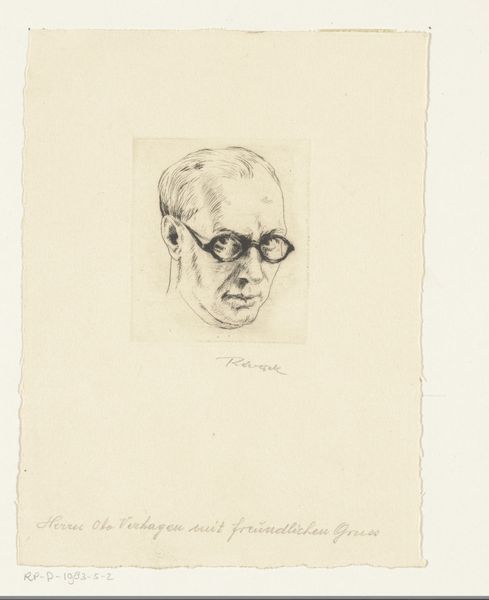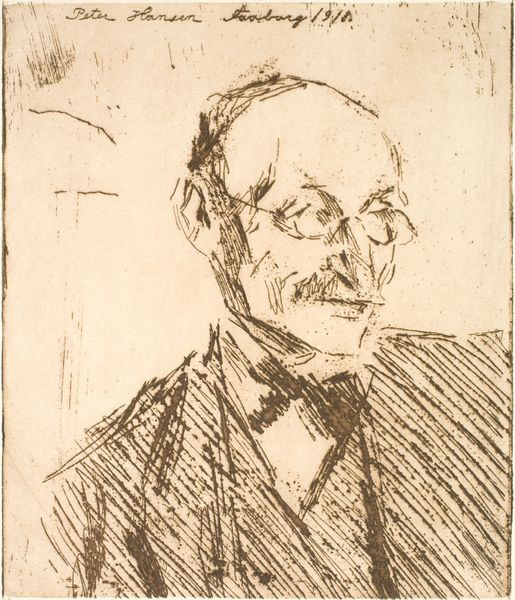
drawing, graphite
#
portrait
#
drawing
#
historical photography
#
graphite
#
modernism
#
realism
Dimensions: height 101 mm, width 66 mm
Copyright: Rijks Museum: Open Domain
Curator: Here we have Lodewijk Schelfhout’s 1918 portrait of Johan Verster, rendered in graphite. Editor: Stark. Austere, almost. The high contrast and narrow tonal range immediately set a rather somber mood, don't you think? Curator: Indeed. It's important to remember that this piece was created during the final year of World War I. The subject's solemnity may reflect the widespread mood of the time. Editor: True. The formal composition, with the profile rigidly placed against a dark backdrop, amplifies that feeling. I find the cross-hatching gives a strange dynamism to an otherwise static image. There is almost a pulsating dark energy within the small confines of the rectangle. Curator: I'd agree, that sense of dynamism is partly due to Schelfhout’s adept manipulation of the graphite medium itself. You've noticed the varied pressure and directional strokes create texture and volume within a limited palette. And given that many artists during that period tried to capture everyday subjects within a modernistic frame, the cross-hatching could also speak to capturing some of the new energies within urban centers at the time. Editor: It makes me wonder about the role of portraiture during wartime. Beyond commemoration, how did such images function as a means of social commentary or resistance? Curator: It’s worth thinking about. Realism as an aesthetic strategy arguably gained more potency against the backdrop of political turbulence. What looks like an unsentimental portrait of a bespectacled man becomes imbued with deeper implications. It could be said, the politics of looking have rarely been so charged. Editor: It's powerful how Schelfhout uses the material qualities of graphite to convey such psychological weight. It certainly encourages me to reassess my own perception of what a portrait from this era is 'supposed' to convey. Curator: Absolutely. It’s these intricate details, and the stories surrounding them, that makes studying art so rewarding. Editor: Agreed. Time well spent observing and contextualizing.
Comments
No comments
Be the first to comment and join the conversation on the ultimate creative platform.
